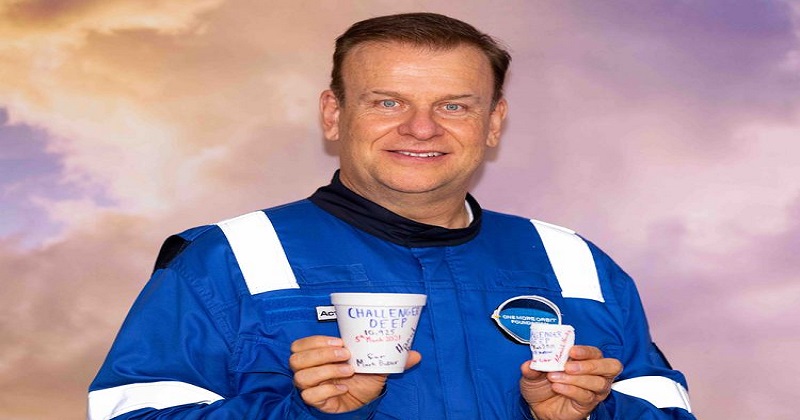
Dubai-based expatriate Hamish Harding and renowned ocean explorer Victor Vescovo has made it to the Guinness record books .They are the first humans to successfully cover the entire length of the deepest section of the Challenger Deep which is the deepest point on Earth.
Employing DSV Limiting Factor, a two-person deep-submergence vehicle built by Triton Submarines, both of them made the dive on March 5 to for the fresh world records as the greatest distance travelled at Full Ocean Depth and the greatest time spent at Full Ocean Depth which is four hours and 15 minutes.The average depth of the ocean is about 12,100 feet. Harding and Vescovo completed theremarkable feat by scouting the lowest point on Earth located at the Mariana Trench which is called Challenger Deep. It’s almost 11km deep — or 10,925 metres precisely. To put things into perspective,that is 13 times the height of Burj Khalifa, the world’s tallest skyscraper!
Harding gave a detailed idea on how it was to be at the deepest point underneath an ocean. “It was the equal of 8,000 double-decker buses or 300 jumbo jets on top of a person,” he said.
Harding showed a styrofoam cup that was placed outside the submersible during the event. It was squeezed to a quarter of its original size thus showing how huge the pressure was ,about 1200 times more than the standard atmospheric pressure at sea level.The mission itself was not easy. Challenger Deep’s floor is not flat as previously considered.The submersible had no choice but to ascend around 800 metres to clear a mountainous plateau which looked similiar to South Africa’s Table Mountain.”Things could go faulty down there — electronics is not usable, there could be mechanical problems and failures, but the submersible was properly-designed. The expedition’s submersible, the Triton-built DSV Limiting Factor, has been designed to bear100,000 tonnes of atmospheric pressure at Full Ocean Depth with its purpose-built 90mm thick titanium sphere,”he remarked.
Harding brought back a creature from the bottom of Challenger Deep. It was similiar to an amphipod, a tiny shrimp-like crustacean that scavenge on the seabed,found at 10.9km below sea level at atmospheric pressures 1,200 times higher.He also said that he did not see any huge pollution like tin cans or plastic bags as normally found in many parts of the sea. The submersible and the mother ship (DSSV Pressure Drop) that was made from a US navy hunting ship was USD 55 million and with each dive costing around USD 1million.
Read more – Indian navy helps a stranded cargo ship in Oman
The mission lasted for 12 hours — four hours to dive and reach the bottom of the ocean at a speed of one metre of descent per second. Then Harding and Vescovo also travelled 4.5 miles (7.2km) across the trench for another four hours, before ascending to the surface for another four hours.Harding is only the 16th person to dive to the bottom of the Challenger Deep in 60 years.

Post Your Comments